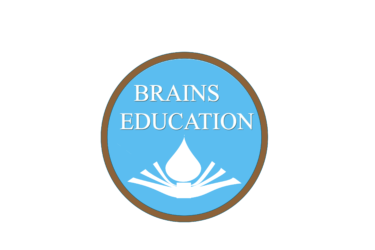MCA
A. MATHEMATICS – (60 Questions)
Logic : Statement, Negation, Implication, Converse, Contraposititve, Conjuction, Disjunction, tautology, Truth Table, Principle of Mathematical induction. Sets, Relation and Function : Union, Intersection, Difference, Symmetric difference and Complement of sets , De Morgan’s laws,Venn diagram, Cartesian product of sets,Power Set,
Relation and function : domain , codomain and range of a relation, types of relations, Equivalence relation, Representation of three dimensional space by RxRxR, types of functions and their domain and range such as: Constant function, identity function, modulus function, logarithm function, exponntial function, greatest integer function. surjective, injective and bijective functions, sum , difference and quotient of functions and their range, Composite function, Inverse of a function.
Number system : Real numbers (algebraic and order properties, rational and irrational numbers), Absolute value, Triangle inequality, AM ≥ GM, Inequalities(simple cases), Complex numbers as ordered pairs of reals, representation of a complex number in the form a +ib and their representation in a plane, Argand diagram, Algebra of complex numbers, modulus and
argument of complex numbers, Conjugate a complex number, Quadratic equation in real numbers, and their solution, Relation between roos and coefficients, nature of roots, formation of quadratic equation with roots. Permutations and Combinations, fundamental principle of counting, permutation as an arrangement and combination as a selection, meaning of P(n,r) and C(n,r), simple applications, Binomial theorem for positive integral index, general term and middle term, properties of Binomial coefficient and their applications, Identities involving
binomial co-efficients.
Determinants and matrices : Determinants and matrices up to third order, Minors and cofactors, Properties of determinants, Matrices upto third order, Types of matrices, algebra of matrices, properties of determinant, evaluation of determinants, Adjoint and inverse of matrix, Application of determinants and matrices to the solution of linear equations (in threeunknowns).
Trigonometry : Compound angles, Multiple and Submultiple angles, Trigonometric identities
, Solution of trigonometric equations,trigonometric functions, Properties of triangles, Inverse
trigonometric function and their properties
Co-ordinate geometry of two dimensions : Cartesian system of rectangular co-ordinates
in a plane,distance formula,section formula,locus and its equation,translation of axes,slope of
a line,parallel and perpendicular lines,intercepts of a line on the coordinate axes. Various
forms of equations of a line, intersection of lines, angles between two lines, conditions for
concurrence of three lines, distance of a point from a lineequations of internal and external
bisectors of angles between two lines, coordinates of centroid, orthocentre and circumcentre
of a triangle, equation of family of lines satisfying various conditions,. Pairs of straight lines, Standard form of equation of a circle, general form of the equation of a circle, radius and centre of a circle, equation of a circle when the end points of a diameter are given, points of intersection of a line and a circle and condition for a line to be tangent to a circle, Equations of tangents to a circle, Equations of parabola, Ellipse and hyperbola in simple forms, their tangents in standard form. Condition of tangency.
Coordinate geometry of three dimensions : Coordinates of a point in space, distance between two points, section formula, Direction cosines and direction ratios, Projection, angle between two intersecting lines.Angle between two planes, Angle between a line and a plane. Distance of a point from a line and a plane.Equations of a line and a plane in different forms, intersection of a line and a plane, coplanar lines.
Sequence and Series : Definition, Infinite geometric series, Arithmetico-geometric series, Exponential and Logarithmic series, Geometric mean between two given numbers, Relation
between AM and GM Vectors : Vectors and scalars,addition of vectors,components of a vector in two dimensions and three dimensional space,scalar and vector products, scalar and vector triple product. Differential calculus: Concept of limit, limits of polynomial functions, rational functions, trigonometric functions, exponential and logarithmic functions, Continuity of functions,
Contuinity and differentiability, Derivative of standard Algebraic and Transcendental functions, Differentiation of trigonometric,inverse trigonometric,logarithmic and exponential
functions,Derivative of composite functions, functions in parametric form, Implicit differentiation, Differentiation of the sum, difference, product and quotient of two functions, derivatives of order upto two,Rolle’s and Lagrange’s Mean Value Theorems,Applications of derivatives: Rate of change of quantities, monotonic – increasing and decreasing functions,Maxima and minima of functions of one variable,tangents and normals, Geometrical application of derivatives such as finding tangents and normals to plane curves.
Integral calculus: Standard methods of integration (substitution, by parts, by partial fraction, etc), Integration of rational, irrational functions and trigonometric functions. Definite integrals and properties of definite integrals, Fundamental Theorem of Calculus, Evaluation of definite integrals, determining areas of the regions bounded by simple curves in standard form.
Differential equations : Definition, order, degree of a differential equation, General and particular solution of a differential equation, Formation of a differential equation, Solution of a differential equations by method of separation of variables, Homogeneous differential equations of first order and first degree, Linear differential equations of the form dy/dx +p(x)y = q(x),
Probability and statistics:
Measures of Dispersion: Calculation of mean, median, mode of grouped and ungrouped data, calculation of standard deviation, variance and mean deviation for grouped and ungrouped data,
Probability: Probability of an event, addition and multiplication theorems of probability, Mutually exclusive events, Independent events, Compound events, Conditional probability, Addition theorem,Baye’s theorem, random variables, probability distribution of a random variate(Binomial distribution only)
B. COMPUTER AWARENESS – 60 Questions
Introduction to Computer: Brief history of Computers, Components of a Computer, Computer related general knowledge, Application of Computers, Classification of Computers, Windows.
Computer Arithmetic: Number System with general base, Number base conversion, Elementary arithmetic operation.
Introduction to algorithm and computer languages.

